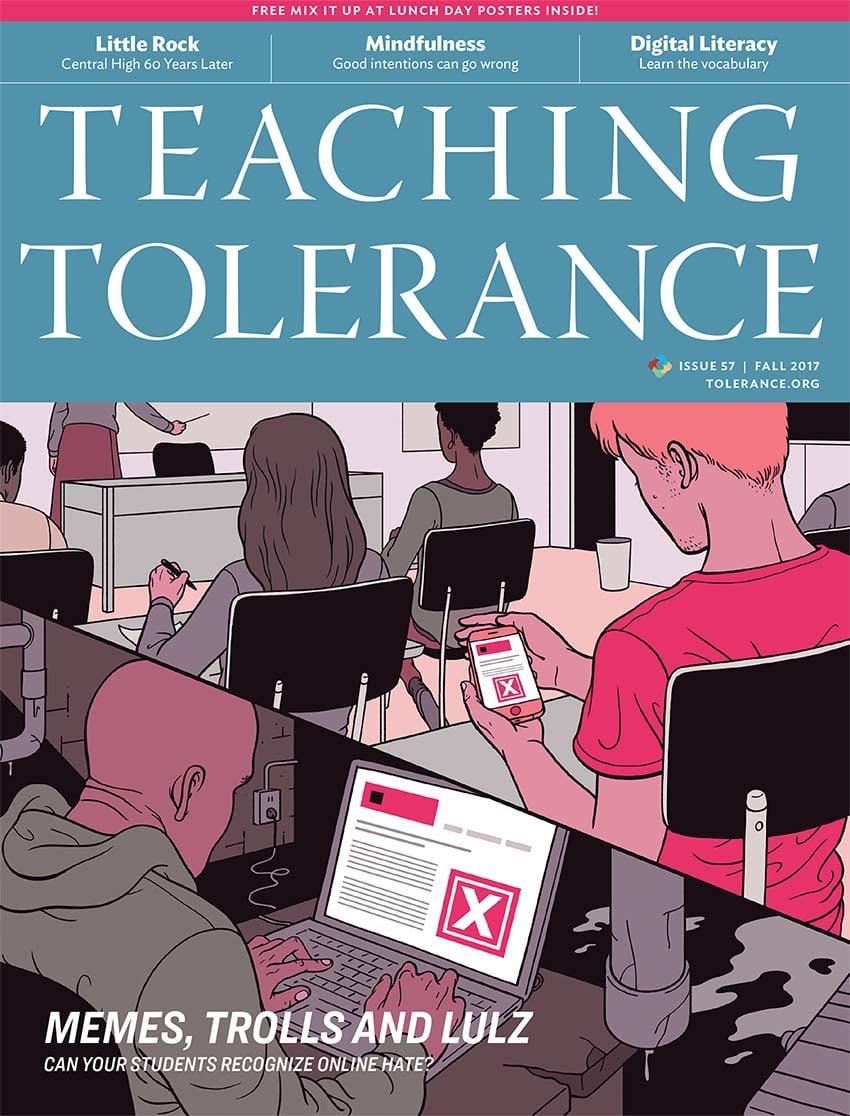Teaching Tolerance magazine helps teachers fight 'alt-right' influence on students
In the wake of the deadly violence in Charlottesville, the “alt-right” movement is continuing to use social media and pop culture to indoctrinate young people with its hateful ideology, but teachers can take action in the classroom to counter its influence, according to the latest issue of the Southern Poverty Law Center’s Teaching Tolerance magazine released today.
The cover story, “What is the 'Alt-Right’?,” examines the alternative-right movement, which is simply a rebranding of white nationalism for the digital age. The article describes not only how young people absorb the movement’s extreme ideas online, but also how classroom lessons of tolerance can reverse its influence. The Fall 2017 issue can be viewed at: http://bit.ly/2wC3jSm.
“The ‘alt-right’ has been very effective at recruiting young people with its special blend of hate-infused memes and humor,” said Maureen Costello, director of Teaching Tolerance. “Teachers can provide a vital line of defense against it, but they must be able to recognize it and take action. This issue provides the resources they need to prevent students from falling prey to this white nationalist propaganda.”
With its origins in online culture, the “alt-right” speaks the language of millennials and younger generations. Its message is distilled into easy-to-digest videos, memes and sound bites, frequently infused with a snarky, “nobody-understands-me” tone. The appeal of its message raises legitimate concerns about students falling down a wormhole of online radicalization.
Another article, “Speaking of Digital Literacy … ” provides teachers with terms that can help students understand the many ways “fake news” finds its way online and is accepted as fact. The terms focus on media manipulation, how people process information that can sometimes conceal the truth, and how people reject information that does not support previously held beliefs. The article is part of a larger initiative by Teaching Tolerance to improve digital literacy among students.
“Teaching From the Bulls-eye,” provides schools with steps they should take when they are harassed by outside groups for efforts to support marginalized students. “Little Rock 60 Years Later” features a special commentary by scholar Hasan Jeffries that reflects on the history of school integration at Central High School in Little Rock, Arkansas – a school that is currently a model of integration success.
Other topics addressed by Teaching Tolerance include an examination of the economic costs of bullying at schools and ways teachers can foster empathy and kindness among students.
Teaching Tolerance magazine, published three times a year, is the nation’s leading journal serving educators on diversity issues. It is distributed free of charge to more than 410,000 educators nationwide.


